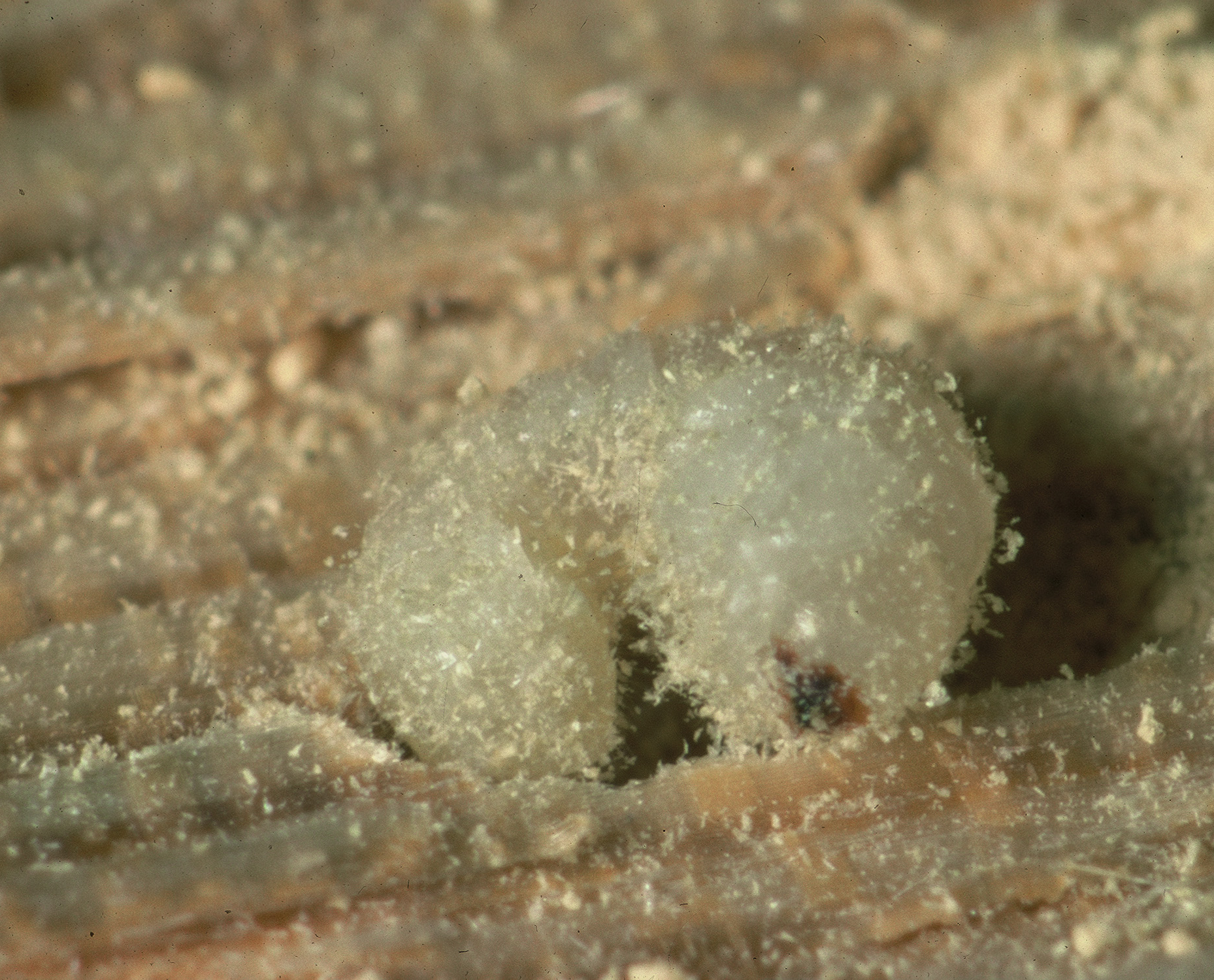The furniture beetle

One of the most destructive wood-eating insects, the furniture beetle is a wood parasite (family Anobiidae) whose larvae feed on worked wood.
What is a woodworm?
There are 2 species:
- The furniture beetle (anobium punctatum), whose larvae feed on all types of wood, particularly timber
- The deathwatch beetle (xestobium rufovillosum), whose larvae feed on hardwood and softwood species, particularly damp construction and ornamental wood, already attacked by lignivorous fungi.
Development of the furniture beetle
The larval development of a furniture beetle depends on a number of characteristics:
- The nature of the wood it feeds on. Certain parts of the wood, such as perfect wood or sapwood, have better nutritional values, which influence the development of the larva.
- The type of fungus present in the attacked wood, which will give the deathwatch beetle its nutritional value.
- The temperature. A furniture beetle larva will thrive in temperatures of between 20 and 20°C
- The humidity level, which must be at least 22%
All these factors will have an impact on the lifespan and different cycles of the beetles.
Life cycle of the furniture beetle
The life cycle of beetles varies from species to species.
For the deathwatch beetle, it takes 2 weeks from egg-laying to the hatching of the larva. The larval stage can last from 2 to 10 years, depending on the development conditions mentioned above. After this period, the larva transforms into a pupa for 2 to 3 weeks until it becomes a perfect insect. Once adult, the furniture beetle’s lifespan is only 8 to 10 weeks.
For the furniture beetle, the incubation period from egg-laying to larval hatching is also 2 weeks. The larval stage of the furniture beetle is much shorter than that of the deathwatch beetle, lasting an average of 8 to 36 months. The nymph develops for 2 to 3 weeks until it becomes a perfect insect, which has a lifespan of 3 to 4 weeks.
Why is the furniture beetle harmful to wood?
Because both species feed on the sapwood and heartwood of wood as larvae, digging their galleries, they weaken timber construction (timber frames, carpentry, interior and exterior woodwork, joinery, furniture, parquet flooring, works of art, etc.).
It is important to remember that their presence can only be detected once the first generation has fledged.
How do you get rid of the Deathwatch beetle?
If the wood has not been treated beforehand, it is possible to carry out a curative treatment to get rid of the parasite.
Using an insecticide to control furniture beetle
The products in the XILIX range are insecticide treatments developed by the Groupe Berkem, offering long-lasting protection for attacked wood. In aqueous emulsion or gel form, they are sprayed, brushed or injected into the contaminated wood after removing excessively damaged areas, brushing and dusting.
Treating beetles in a roof structure
As the backbone of the building, the roof structure is very popular with beetle larvae, and requires a thorough diagnosis to determine the exact extent of the damage and opt for the most appropriate curative solution: injection, spraying or application of an insecticide treatment.
The carefully prepared wood receives the in-depth treatment to definitively destroy adult insects and larvae.
All our news
All our news



